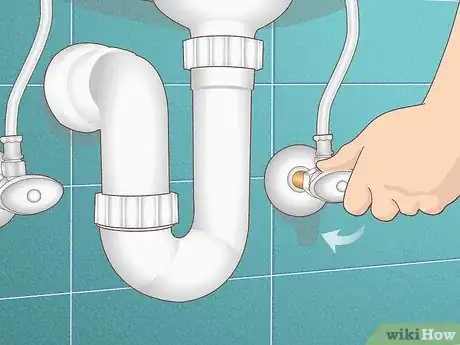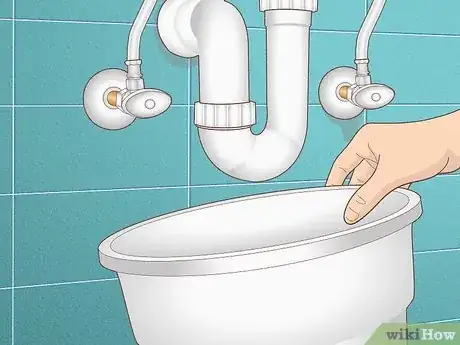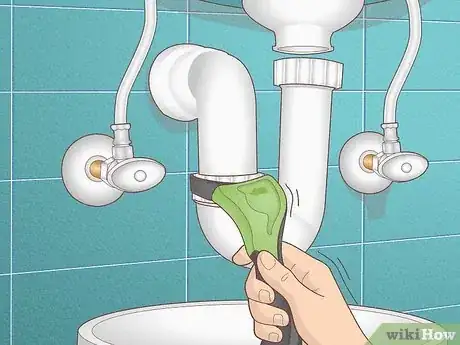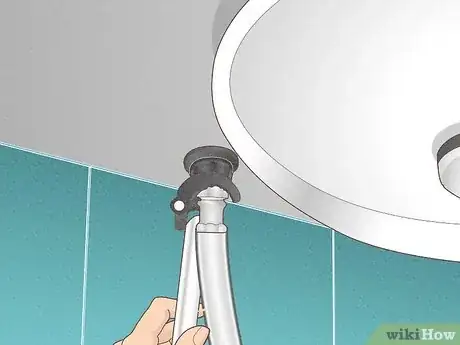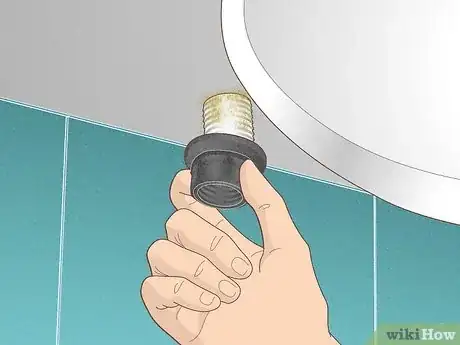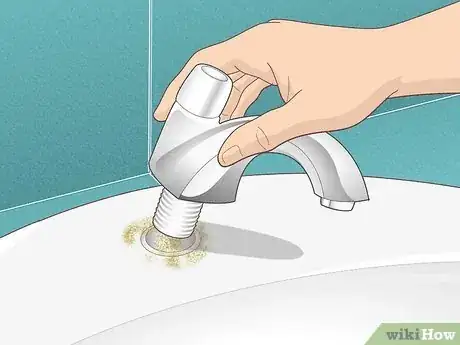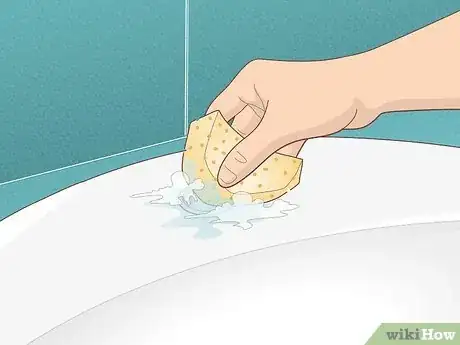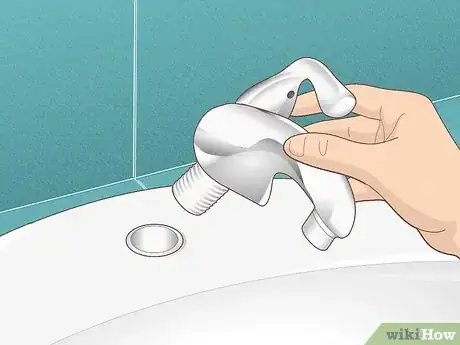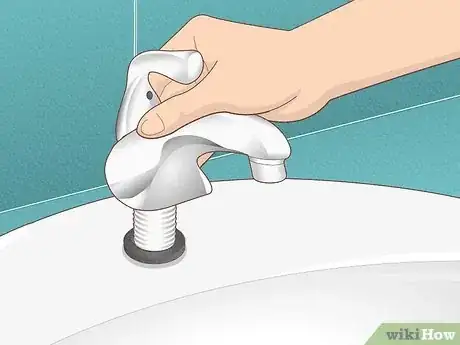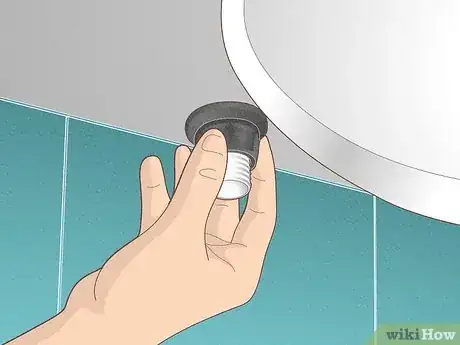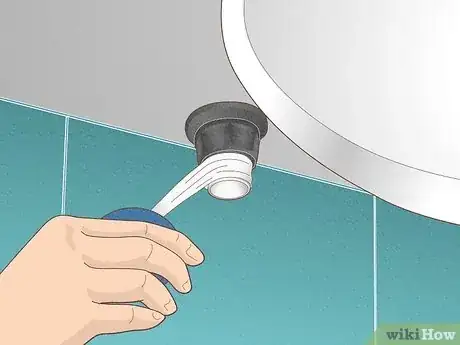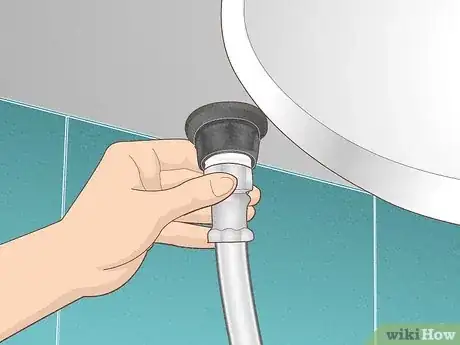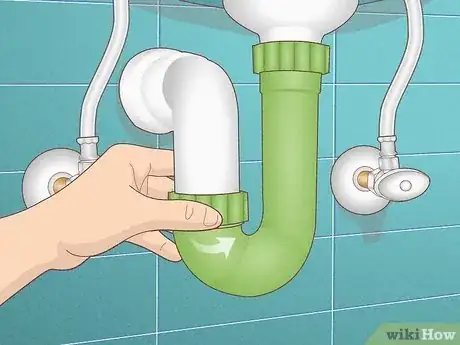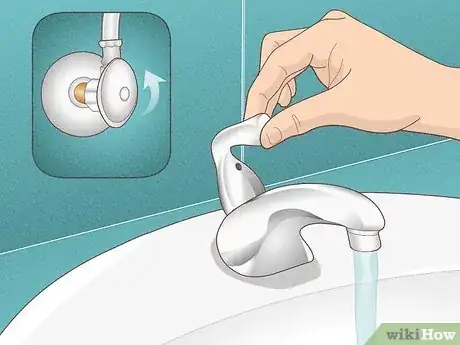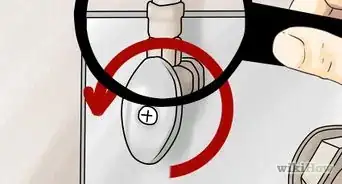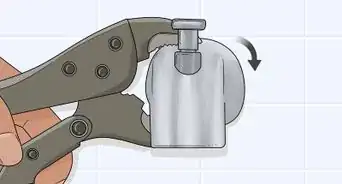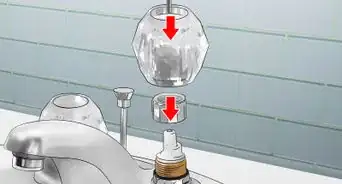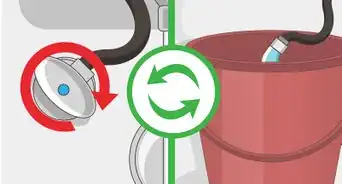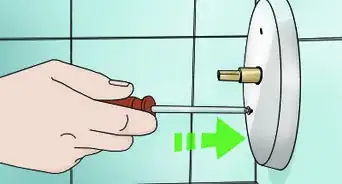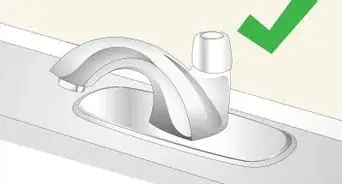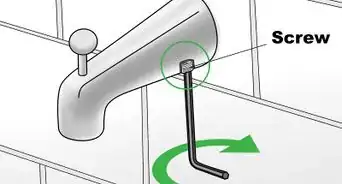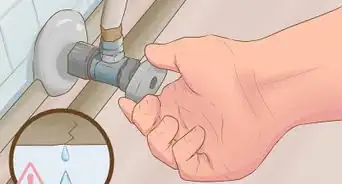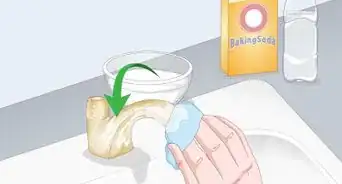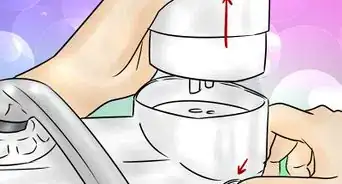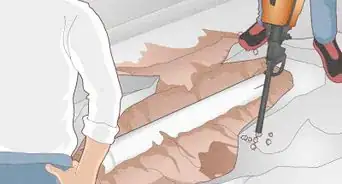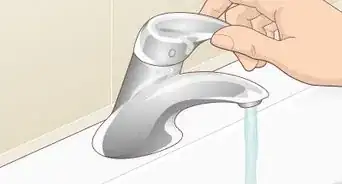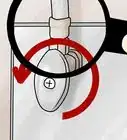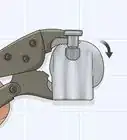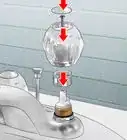This article was co-authored by Patrick Johns and by wikiHow staff writer, Hunter Rising. Patrick Johns is a Home Improvement Specialist and the Owner of CatchAll Handyman Services. With more than 28 years of experience, he has worked on a variety of home improvement projects, such as carpentry, plumbing, and door and window installations in both commercial and residential properties.
There are 17 references cited in this article, which can be found at the bottom of the page.
This article has been viewed 105,523 times.
A new faucet is a great way to update your bathroom without breaking the bank. Whether you want to change the look of your sink or replace an old leaky unit, removing and installing a bathroom faucet is a DIY project you can tackle on your own with just a few tools. Even if you don’t have a lot of plumbing experience, we’re here to help you through it. Keep reading for everything you need to know so you can change your faucet easily.
Things You Should Know
- Turn off the water supply to your faucet. Unscrew the water supply lines and lock nuts under your sink with a basin wrench to remove the old faucet.
- Use a single hole faucet if your sink has 1 mounting hole. If you have 3 holes, you can use a center-set or widespread faucet.
- Set the new faucet into the mounting holes and secure it with the lock nuts. Screw the water supply lines back onto the faucet.
- Turn your water on and test the faucet assembly for leaks. Tighten any loose connections if you find any.
Steps
Removing the Old Faucet
-
1Turn off the water supply to your sink. You can typically find the water shutoff valve on the wall behind or underneath your bathroom sink.[1] Turn the valve clockwise to shut off the water to the faucet. After that, turn on your faucets to drain the excess water from the lines.[2]
- You may have a single water valve for the entire faucet, or you may have two separate valves for hot and cold water. Make sure you turn all of the valves off so no water is running through them.
- If you have trouble locating the shutoff valve for your bathroom faucet or if the faucet still runs, turn off the main water supply to your home.
-
2Put a towel and bucket below the sink’s drain pipe. Clear out the area underneath your sink completely. Lay the towel down so it’s right below the pipes to protect your floor and vanity from water damage. Set a bucket on the towel just below the faucet and drain pipe.[3]Advertisement
-
3Disconnect the P-trap and sink drain (if you’re replacing the drain too). The P-trap is the curved section of pipe underneath your sink connecting the drain to the wall. Unscrew the pipe connections on your P-trap by turning them counterclockwise by hand or with a crescent wrench. Then, unscrew the metal nut on the bottom of your drain to loosen it from the sink. After that, just finish unscrewing the vertical drain pipe and pulling the stopper out from the top of the drain.[4]
- Some new faucet assemblies come with a new stopper and waste pipe, so it’s the perfect opportunity to replace the drain.
- Many faucets are compatible with your existing drain and stopper. If you don’t want to replace the drain, then you don’t need to disconnect the P-trap. Just find the horizontal metal rod coming out from the drain under your sink and disconnect the rod by sliding off the clip.
-
4Undo the water supply lines with a basin wrench. A basin wrench has a long handle so you can reach and unscrew the nuts under your bathroom faucet. To use your basin wrench, find the metal water supply lines connecting the valve to your faucet. Secure your basin wrench around the nuts on the bottom of the faucet and turn them counterclockwise until they’re loose. Then finish unscrewing them by hand.[5]
- If the area under your sink isn’t too cramped, then you can use a regular crescent wrench.
- You can leave the other ends of the supply lines connected to the valves on your wall.
- Water supply lines may drip water once you disconnect them, so be sure to hold them over the towel and bucket. Wipe up any water that drips onto the bottom of the vanity immediately to prevent damage or warping.
-
5Unscrew the lock nuts and washers on your faucet by hand. Your faucet is attached with plastic lock nuts underneath your sink. Since the lock nuts are usually only hand-tight, try turning them counterclockwise to loosen them. If they feel stuck, then just grip them with your wrench to get better leverage. Once they’re loose, pull them off along with the rubber washers underneath them.[6]
- If you can’t reach the lock nuts, you can easily unscrew them with a basin wrench too.
- If your faucet nut is stuck or if you have any trouble turning it, try spraying it penetrating oil to cut through the rust. If that still doesn’t work, cut through the nut with a hacksaw.[7]
-
6Lift the old faucet out from the sink to remove it. Hold the faucet in both hands and pull it straight out from the mounting holes. If you see a plastic or rubber gasket still stuck on your sink, remove it as well.[8]
- You can usually recycle an old sink faucet or take it to a metal scrapyard. Contact your area’s recycling service and ask if they’ll accept your faucet.[9]
-
7Clean the faucet and drain holes with soapy water and a sponge. There may be some old buildup or sealant underneath your old faucet or where the drain sat in your sink. Wet the area with some soap and water and scrub the holes with a sponge or gentle abrasive pad. Once the area is clean, rinse it well, pat it dry, and let it air-dry completely.[10]
- Use a plastic putty knife to scrape off any stubborn residue on your sink. Avoid using metal putty knives since they could scratch your sink’s finish.
- Your new faucet will create a better waterproof seal if you install it on a clean surface.
Installing the New Faucet
-
1Choose a new faucet based on the mounting holes on your sink. Before you go to the home or hardware store for a new faucet, look at your basin hole configuration. Your basin will either have 1 or 3 mounting holes. Measure the distance between the holes so that you get the right replacement faucet.[11] You can also use the old faucet as a guide to the new faucet you purchase.
- Single hole faucets have a spout with a single attached handle. They only require 1 hole in your basin, but you can install them in a 3-hole basin if they have a large decorative escutcheon plate.[12]
- Center-set faucets have separate hot and cold handles, but they’re still attached to the main spout. These faucets work great if you have 3 holes in your basin that are close together.
- Widespread faucets come in 3 separate pieces and work best if the mounting holes are spaced far apart on your sink.
- Try to get a faucet that matches the finishes and other fixtures that you already have in your bathroom so the styles don’t clash.[13]
-
2Align the new faucet and its gasket with the mounting holes. Your faucet will come with a plastic or rubber gasket that helps prevent water from leaking through the mounting holes. Slide the gasket onto the bottom of your faucet. Then, hold the faucet with both hands and carefully set it into the mounting holes.[14]
- You can apply a bead of silicone caulk around the edge for extra waterproofing, though your gasket will work fine without it.[15]
-
3Secure the new faucet to the sink with the washers and lock nuts. Slide the rubber washers onto each of the tailpipes hanging from the new faucet. Then, screw on the plastic lock nuts until they’re hand-tight. Check to make sure that the faucet is straight before giving the nuts a final half-turn with a wrench to tighten them down.[16]
- Avoid tightening the nuts if you feel resistance, or else you could damage your sink or strip the threading.
-
4Apply plumber’s tape around the faucet’s threaded connections. Plumber’s tape is designed to lubricate pipe fittings and create a better seal between components to prevent leaks. Apply the plumber’s tape where the supply lines connect to the faucet underneath your sink. Pull the tape tight, and wrap it 1–2 times so it goes in the same direction as the threading.[17]
- If the ends of your supply lines have rubber gaskets, then you don’t need to use plumber’s tape.
-
5Screw the water supply hoses back onto your faucet. Start by tightening the nuts by hand by turning them clockwise on the faucet’s tailpipes. Once you can’t tighten them anymore, use your basin wrench to keep turning the nuts by another quarter-turn until you feel resistance.[18]
- If you have a center-set or widespread faucet, then each handle will have an additional supply line that connects to the spout.
-
6Install the new drain pipe (if your faucet came with one). Put a layer of plumber’s putty around the top of the drain hole and set the new stopper inside. Underneath your sink, slide the rubber gasket and nut onto the drain pipe and tighten it by hand until it’s snug. Then, just screw your P-trap back onto the end of the drain pipe to finish your drain assembly.[19]
- If the new drain pipe is longer than your old one, you may need to fit and cut the drain pipe down so it fits under your sink.
-
7Turn your water supply back on to test your faucet. Once you’ve got everything put back together, turn the shutoff valve counterclockwise. Then turn the handles on your faucet so the water flows through the spout. If you don’t notice any leaks or drips, then you’re finished with your repairs.[20]
- To fix a leaky faucet handle, try replacing the faucet cartridge.
- If you see leaks dripping from pipe connections, turn off your water and ensure any plumber’s tape or rubber washers are working properly. Then tighten all the pipe connections and test the water again.
Community Q&A
-
QuestionThe water supply nut is corroded and hard to turn. What do you suggest?
 Layla MouldingCommunity AnswerSpray with WD40 or drop some oil around the nut, use a flat head screwdriver and/or a spanner or adjustable wrench.
Layla MouldingCommunity AnswerSpray with WD40 or drop some oil around the nut, use a flat head screwdriver and/or a spanner or adjustable wrench.
Warnings
- If you don’t feel comfortable replacing a faucet on your own, then contact a plumber to do it for you.⧼thumbs_response⧽
Things You’ll Need
- Towel
- Bucket
- Crescent wrench
- Basin wrench
- Sponge
- Dish soap
- Putty knife
- Faucet
- Plumber’s tape
References
- ↑ Patrick Johns. Home Improvement Specialist. Expert Interview. 5 April 2022.
- ↑ https://pdf.lowes.com/installationguides/6953123900877_install.pdf
- ↑ https://www.signaturehardware.com/media/pdf/ultra-widespread-faucet-installation.pdf
- ↑ https://youtu.be/ngI6Z5svTag?t=86
- ↑ Patrick Johns. Home Improvement Specialist. Expert Interview. 5 April 2022.
- ↑ https://youtu.be/ngI6Z5svTag?t=205
- ↑ https://www.bobvila.com/articles/replacing-a-kitchen-faucet/
- ↑ https://youtu.be/ngI6Z5svTag?t=216
- ↑ https://portal.311.nyc.gov/article/?kanumber=KA-02013
- ↑ https://youtu.be/gZ0Cz3gRglo?t=185
- ↑ Patrick Johns. Home Improvement Specialist. Expert Interview. 5 April 2022.
- ↑ https://youtu.be/mvquMHahafE?t=46
- ↑ https://www.bobvila.com/slideshow/10-tips-for-finding-the-perfect-faucet-44282
- ↑ https://youtu.be/ngI6Z5svTag?t=238
- ↑ Patrick Johns. Home Improvement Specialist. Expert Interview. 5 April 2022.
- ↑ https://youtu.be/T3LbvEy8kJ0?t=194
- ↑ https://www.antiseize.com/PDFs/how_to_apply_poly-temp_tapes.pdf
- ↑ https://youtu.be/gZ0Cz3gRglo?t=283
- ↑ https://youtu.be/gZ0Cz3gRglo?t=518
- ↑ https://pdf.lowes.com/installationguides/6953123900877_install.pdf
About This Article
Before replacing a bathroom faucet, turn off the water supply using the valve behind the sink, and drain the pipes beneath the basin. Next, disconnect the supply tubes beneath the basin, and use a wrench to remove the bolts holding the old faucet in place. Then, remove the old faucet, insert the new gasket and faucet over the existing hole, and wrap the ends of the new supply lines with plumber’s tape. Finally, reconnect the supply hoses and tighten each bolt with the wrench before turning the water supply back on. For advice on how to replace a center-set faucet with a single hole faucet, read on!
